Characteristics
Everything is customizable: shape, dimensions, bevel grind type, handle type, materials, engraving...
Bevel grind
Grind types
Ici, 4 différents types d’émouture (encore une fois, tout est personnalisable) :
1 - Full flat, symmetrical, with secondary bevel on the cutting edge.
- This is what we traditionally find on European style knives.
- The cutting edge will have more robustness (the angle of the cutting edge being generally higher, there is more material behind the cutting edge). However, there will be less of a razor edge for fine cuts.
- Sharpening is easier and can be done with a water grinding wheel.
2 – Plate totale, symétrique, avec tranchant convexifié à la pierre à eau.
- Variant of the previous one. Convex bevels will improve food penetration and allow a razor-sharp edge.
- Cutting edge angle may be lower, to the detriment of robustness.
- Sharpening is more difficult and will need to be done with whetstones.
3 - Partial flat (bevels do not go up to the spine of the blade), symmetrical, convex bevels with whetstone.
- This is what we traditionally find on Japanese style knives.
- This type of grind will improve food release from the blade.
- Cutting edge angle may be lower, to the detriment of robustness.
- Sharpening is more difficult and will need to be done with whetstones.
4 - Chisel (one side is beveled, the other is flat and slightly concave), asymmetrical, without secondary bevel.
- This is what we traditionally find on some Japanese knives, especially slicers for raw fish (e.g., Yanagiba).
- This type of grind will improve food release from the blade and cutting edge angle is very low. It is a real laser, but at the expense of robustness. Ideal for cutting delicate protein but should be avoided on tough foods.
- Sharpening is more difficult and will need to be done with whetstones.
- Attention, this type of grind being asymmetrical, it is necessary to specify right-handed or left-handed. Also requires some learning as slicing with an asymmetrical blade can be tricky at first.
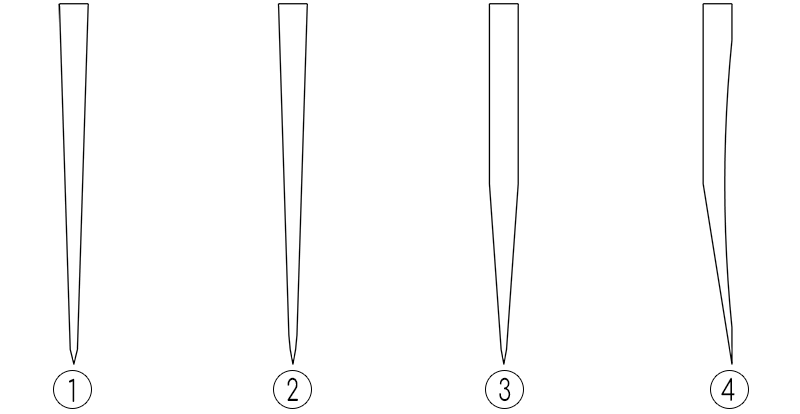
Materials
Steels
I use cutlery steels with specific characteristics. With state-of-the-art processing, they deliver exceptional sharpness and edge retention even in the context of professional use.
High carbon steel (non-stainless)
They generally offer greater hardness and better edge retention.
Sharpening is easier.
Requires more maintenance and care to prevent rust formation. When in contact with food, carbon steel will patina (darken) and can stain with food contact, which is normal and harmless.
Laminated steel (non-stainless)
Damascus: by alternating layers of different types of steel welded in the forge, then folded/stacked, welded, etc. we multiply the layers and create different patterns on the blade. The greater the number of layers, the finer the patterns. The possibilities are nearly endless.
Different steel properties allow the blade to be more resilient.
This type of steel requires a lot of work, which is why the price is higher than for homogeneous steel.
San-mai: 3-ply sandwich with wrought iron, mild steel, or non-hardening stainless steel on either side of a high carbon steel core.
This assembly allows the blade to be more resilient.
Aesthetically, we will find the demarcation between the different materials on the blade.
Laminated steel made from carbon steels requires more maintenance and care to prevent rust. When in contact with food, carbon steel will patina (darken) and can stain with food contact, which is normal and harmless.
Stainless steel
Steel resistant to oxidation (rust) thanks to a high chromium rate, requiring less maintenance and care than high-carbon steels. Be careful though, stainless steel resists oxidation well but is not 100% rust-free in extreme conditions such as in the marine environment.
Generally, a little less hard than high carbon steel, we still have a good edge retention with modern steels.
Depending on steels, sharpening may be more difficult (hard chromium carbides).
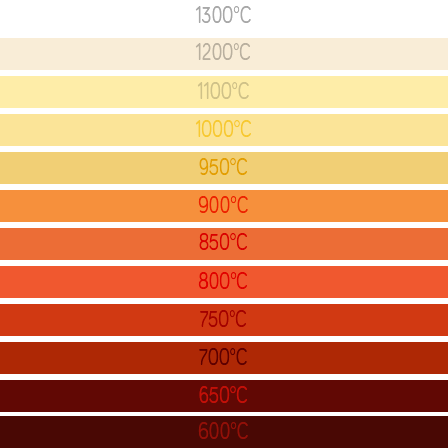
Handle type
Full tang handle
- Scales are glued and riveted on each side of the tang. This assembly allows greater robustness on knives subject to abuse (e.g., survival, camp / bushcraft, hunting).
- With kitchen knives, it is more of an aesthetic choice rather than a functional need.
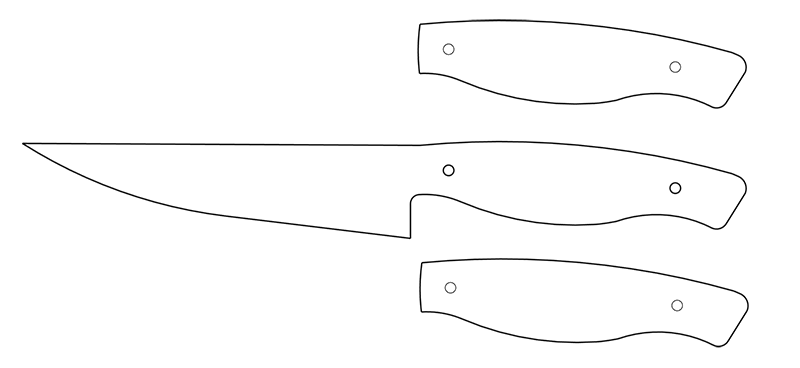


Hidden tang handle
- One-piece handle inserted and glued on a partial tang, which is then hidden.
- Called "wa" on Japanese knives, the handle can be octagonal, hexagonal, oval. or hybrid shaped.
- Personally, my preference goes to the octagonal shape.
- Handle can be made of several woods or other materials that are glued together. There may be a brass guard or another material between the blade and the rest of the handle.
Materials
Natural wood handle
Natural wood just oiled or waxed is the raw material in its noblest expression, but being a living natural material, it requires more maintenance and will be subject to variations in temperature and humidity.
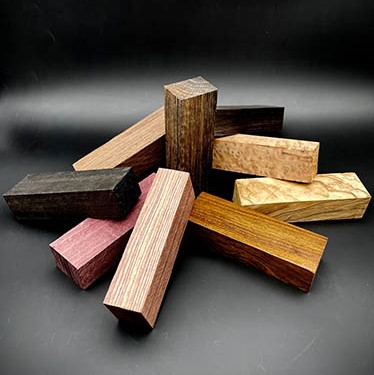
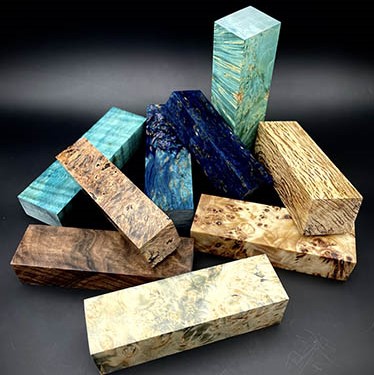
Stabilized wood handle
Stabilized wood has been impregnated with synthetic resin throughout. This material combines the beauty of wood with the strength and waterproofness of resin. The wood can be natural color, or dyed.
Composite materials handle
Paper, linen, cotton, fiberglass or carbon fiber laminated and impregnated with synthetic resin. These composite materials are ultra-resistant and allows different aesthetic options.
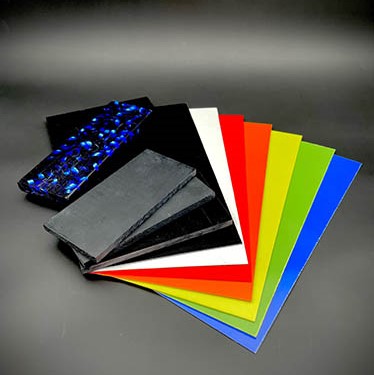
See main types of knives

